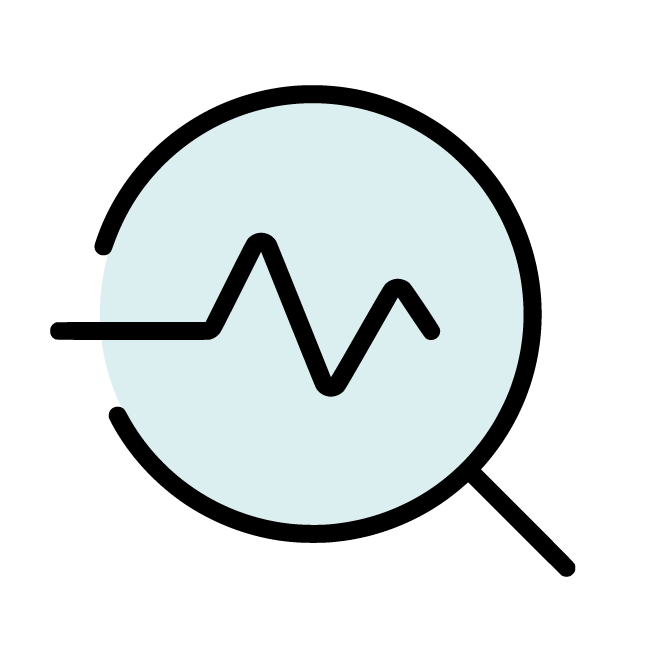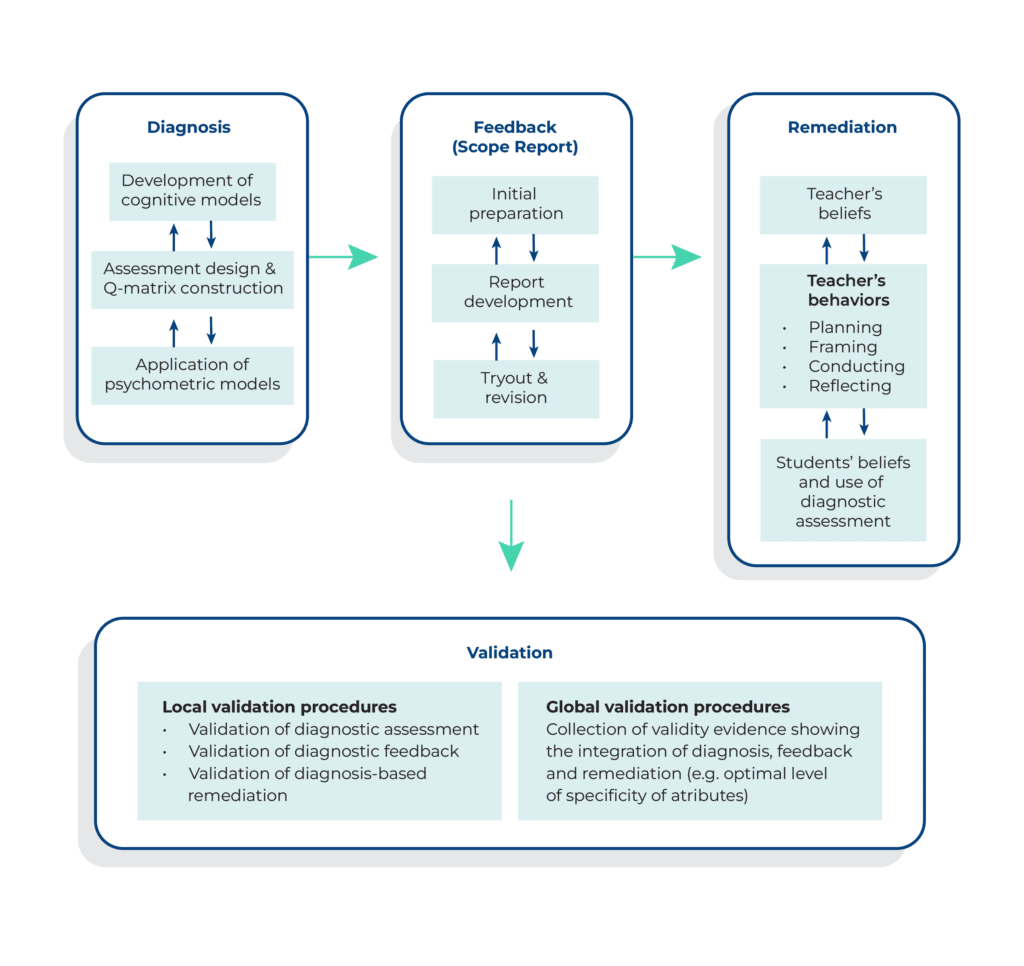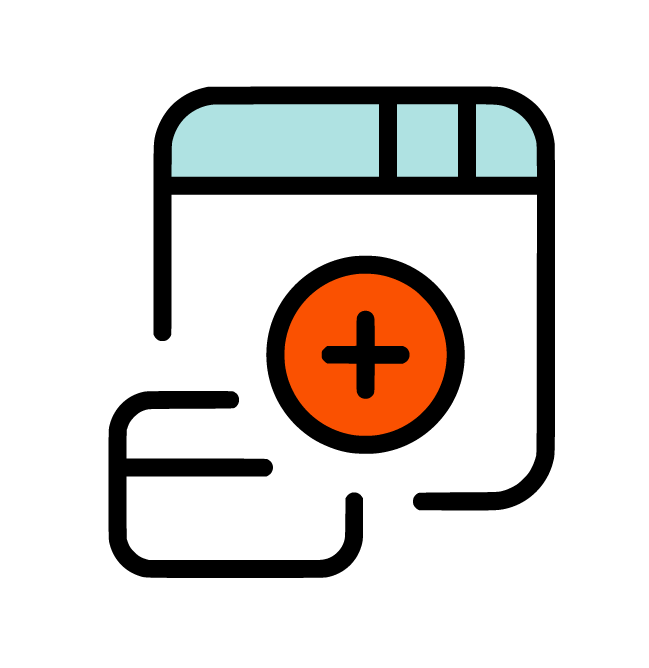
In education, knowing where students stand in their learning journey is fundamental. Diagnostic assessment acts as a reliable tool, providing educators with insights into students’ strengths and areas for improvement. Here, we explore the fundamentals of diagnostic assessment, examining its purpose, components, benefits, challenges, and best practices for implementation in online learning.
What is Diagnostic Assessment?
Diagnostic assessment in education aims to identify both strengths and areas for development in a learner’s skills and understanding. The assessment is carried out before teaching the subject matter as a pre-evaluation of student knowledge and skills. The results of the assessment are then utilized to enhance the student’s learning and provide guidance for future instruction, as referenced by K. Hill and T. McNamara (2012), citing Davies (1968) and Jang (2010).
Alderson (2005) echoes such explanations when exploring the benefits of developing a suite of Diagnostic Assessments, stating that diagnostic assessments identify the level a learner has reached and spotlight weaknesses or possible areas for improvement.

Components of Diagnostic Assessment
A diagnostic assessment will ordinarily meet the following criteria:
Whilst diagnostic assessments are used first and foremost to identify knowledge gaps before the learning process begins, educators may also use an identical assessment at the end of the learning period to assess student learning progress and determine the effectiveness of the teaching methods.
The Difference Between Diagnostic, Formative and Summative Assessment
There are several differentiating characteristics between Formative, Summative and Diagnostic Assessment. We outline the key defining features of each in the table below:
| Assessment Type | Purpose | Timing | Stakes |
| Diagnostic | Identify students’ learning gaps in understanding, enabling educators to tailor teaching strategies to individual needs. | At the beginning of the course, module or learning period. An identical test may also be used at the end to determine learning progress and the effectiveness of teaching strategies. | Low |
| Formative | Assess knowledge on an ongoing basis to determine if students are on the right track and identify areas for further instruction | Ongoing throughout the duration of the learning period. | Low |
| Summative | Evaluate students’ learning at the end of a period, providing a final overview of their understanding and performance against learning objectives based on their final grade. | At the end of the course/module or learning period. | High |
The Benefits of Diagnostic Assessments in Online Learning
Diagnostic assessment is an essential part of both traditional and online learning. Here we explore its benefits in online learning for both educators and students:
| Educator Benefits | Student Benefits |
| Informed Lesson Planning Address Individual Needs Effective Progress Monitoring | Optimized Learning Increased Confidence Addressing Misconceptions |
Educator Benefits:
“Through carefully constructed diagnostic items—supports teachers in improving instruction by providing them with a natural extension to their practice, rather than requiring a major shift in mind-set.” Ciofalo, J., & Wylie, C. E. (2006).
As stated by Ciofalo, J., & Wylie, C. E. (2006), diagnostic assessment helps educators to improve their instruction. By analyzing the results of diagnostic assessments, educators can then effectively focus their lesson planning on addressing specific learning gaps or misconceptions within the learning process.
Diagnostic assessment helps educators to overcome common issues, such as tailoring instruction to individual student needs. By conducting effective diagnostic assessment at the beginning of the learning period, educators can accurately individualize their instructions based on the developmental level of each pupil Caspó & Molnár (2019).
Whilst by definition, diagnostic assessment is most commonly carried out at the beginning of the learning period. By carrying out identical assessments post or mid-way through instruction, educators can track students’ progress and evaluate the effectiveness of their teaching strategies.
This method empowers teachers to adapt their teaching techniques, ensuring ongoing enhancement in student learning outcomes.
Moreover, even if the same assessment is not given again, the initial diagnostic assessment results serve as a reliable benchmark for comparing the student’s current level during the learning journey.
Student Benefits
As educators have a precise understanding of students’ existing knowledge and misconceptions, learning can start from a level suited to each student, avoiding frustration or loss of motivation caused by being over or under challenged.
When educators recognize and leverage students’ existing knowledge, it can provide the students with a feeling of validation of their comprehension and enhance their confidence in their skills for the learning period ahead.
As explored, diagnostic assessment enables educators and students to identify and address common misconceptions before instruction. This therefore helps students develop a more accurate understanding of the subject matter from the beginning. As a result, students can build a solid foundation of knowledge upon which to construct new learning (University of Buffalo).
How to Incorporate Diagnostic Assessment Into Online Learning
Diagnostic assessment seamlessly integrates into online learning, offering numerous effective methods for implementation, including:

Students can create concept maps online to visually represent their understanding of a topic. Educators can analyze these maps to identify misconceptions or gaps in understanding.
Online polls and quizzes can assess students’ knowledge and understanding of specific concepts or skills. Immediate feedback can be provided to both students and educators, allowing for quick identification of areas needing further clarification or reinforcement.
Virtual scenarios or simulations prepared by educators can present students with real-world situations relevant to the subject matter. Through their responses and interactions within these simulations, educators can gauge students’ problem-solving skills and knowledge application.
Conducting focus groups or interviews online allows educators to gather qualitative data about students’ experiences, perceptions and understanding of the subject matter.
Surveys can be used as diagnostic assessment tools to gather student feedback about their prior knowledge, learning preferences, and perceived strengths and weaknesses. This information can inform educators’ instructional decisions and help tailor teaching strategies to meet the diverse needs of learners in an online environment.
Examples of Diagnostic Assessment
There are no specific criteria for exactly how a diagnostic assessment should be conducted nor what it should include. However, here we explore some examples of potential diagnostic assessment for a selection of subject areas:
| Subject Area | Diagnostic Assessment Example |
| Psychology | Conducting a survey or focus group to evaluate assumptions about concepts surrounding human behavior. |
| Physics | Distributing conceptual questions or online quizzes at the beginning of the semester to assess comprehension of foundational physics principles. |
| Mathematics | Administering math fluency assessments, problem-solving evaluations, or concept-specific tests through online simulations to evaluate proficiency and pinpoint areas of challenge. |
| Science and Social Studies | Implementing concept maps or subject-specific quizzes to evaluate mastery of critical concepts in science and social studies disciplines. |
| Language Learners | Conducting language proficiency quizzes or oral interviews to evaluate language skills and tailor instruction for students. |
| Business Studies | Utilizing online surveys, quizzes, or online scenario analysis to assess understanding of business concepts, strategic thinking, and problem-solving skills essential for success in the business field. |
| Nursing | Administering online simulations or quiz-based clinical skill evaluations to gauge proficiency in patient care, critical thinking, and decision-making abilities. |
| Computer Science | Implementing coding challenges, online quizzes, or debugging scenario simulations to assess proficiency in programming languages, problem-solving skills, and algorithmic thinking necessary for success in computer science disciplines. |
Facilitating such online diagnostic assessment with Inspera Assessment offers an extensive range of question types and assessment capabilities.
The platform offers a variety of question types, both automatically and manually scored, encompassing multiple-choice, response questions with intricate scoring, essays, document uploads, and oral assessments. The numerical simulation question type enables the creation of automatically graded math questions with programmed parameters and randomized response outcomes.
Educators can also easily maintain integrity by offering a variety of measures within the system to ensure that all candidates face the same conditions during their assessment.
Not only does the software provide broad flexibility and integrity but it also offers a rich array of feedback capabilities including comments anchored to text, page notes, assessment wide feedback and audio notes.
The Challenges of Using Diagnostic Assessment in Online Learning
Diagnostic assessment, as with all forms of assessment both in the classroom and in online learning, comes with its potential challenges. Here we explore some of the most common:
Let’s explore each of these potential challenges further.
Like any assessment, diagnostic assessments can sometimes make students anxious. If a student worries about answering incorrectly or fears they might not meet the required level, they might not answer honestly, be encouraged to engage in academic dishonesty, or avoid answering questions altogether.
Fortunately, online learning is well adept at counterbalancing these challenges with the use of proctoring software and has in fact, been shown to reduce student anxiety, reducing the impact of such challenges (Ogange, B.O., Agak, J.O., Okelo, K.O. and Kiprotich, P., 2018).
It’s suggested that diagnostic assessment may be time-consuming as educators must take additional time out of their already limited time and resources to create an effective diagnostic tool, requiring in-depth knowledge of the subject area and understanding of common student misconceptions. They must also then take time to mark the assessments and develop their lesson planning in alignment with the results.
It is useful to note, however, that depending on the online assessment tool, the impact of this challenge for educators can be significantly reduced due to user-friendly assessment creation, peer review and automated marking capabilities.
There is also sometimes the potential for false inferences of student knowledge when using diagnostic assessment. This is a result of the subjective nature of some assessment formats and due to the fact staff may require additional training in order to create and score diagnostic assessments reliably.
Best Practice for Using Diagnostic Assessment Effectively in Online Learning
Following best practices for using diagnostic assessments in online learning ensures accurate evaluation of student understanding, identifies learning gaps, and guides instructional decisions. It fosters fairness, reliability, and integrity in assessments, promoting meaningful learning experiences and enhancing overall student success in online education.
Fan, T., Song, J. & Guan, Z. (2021) developed the integrative framework of diagnosis, which builds upon previously constructed frameworks (e.g., from Fan & Zeng, 2016; Harding et al., 2015; Lee, 2015; Lee & Sawaki, 2009), feedback (e.g., Zenisky & Hambleton, 2012), and classroom-based assessment (e.g., Hill & McNamara, 2011; Wang & Li, 2019 as cited by Fan, T., Song, J. & Guan, Z. (2021)). The framework is built upon four major components and aims to provide a guide to educators for integrating diagnostic assessment into the curriculum.
The major components are broken down as below:
- Designing and conducting diagnostic assessments
- Providing diagnostic feedback to stakeholders
- Implementing remedial instruction and learning
- Validating the integrative system of diagnosis

Fig.1: Source: Fan, T., Song, J. & Guan, Z. (2021)
In recognition of this framework and review of wider sources, we have outlined seven best practices for using diagnostics in online learning:
1. Choose appropriate test formats and platforms
2. Apply subject area expertise to develop assessment questions
3. Provide clear instructions and expectations
4. Monitor and troubleshoot the test administration
5. Provide timely results and feedback
6. Action result findings into student learning
7. Review and revise your test practices
Let’s explore each of them further.
1. Choose Appropriate Test Formats and Platforms
Fitting within the first component of Fan, T., Song, J. & Guan, Z. (2021)’s framework ‘Designing and conducting diagnostic assessments’, it’s important to choose an appropriate format for the assessment.
Specifically, for online assessment, it’s also vitally important to select an online assessment platform that best facilitates your assessment needs and offers a positive experience for both educators and students.
2. Apply Subject Area Expertise to Develop Assessment Questions
Educators should leverage their in-depth subject matter expertise and experience of teaching the subject in order to determine the content of the assessment. For example, common student misconceptions should be identified and addressed.
Alderson et al., (2015) explains that educators should use discrete-point items to efficiently identify weaknesses and for straightforward interpretation of diagnostic results.
3. Provide Clear Instructions and Expectations
The next stage involves effectively communicating with students regarding the intent, structure, length, scoring methods, technical specifications, and protocols of assessments.
4. Monitor and Troubleshoot the Test Administration
Educators should also carry out a quick check to oversee and address any issues that arise during the test administration, ensuring a fair and seamless process for all students.
5. Provide Timely Results and Feedback
Providing timely results and feedback is the next important element of best practice for implementing effective diagnostic assessment online and forms the second major component of Fan, T., Song, J. & Guan, Z. (2021) framework.
Feedback should adhere to predetermined criteria, like Rubrics, tailored for the assessment. It should be promptly delivered to students within a structured timeframe, ideally utilizing automated marking and immediate results delivery available on online learning platforms where applicable. In cases such as online interviews and focus groups where automated feedback is not possible, educators should leverage other types of feedback capabilities available to deliver meaningful and timely feedback online.
6. Action Result Findings in Student Learning
Here we acknowledge the third component of Fan, T., Song, J. & Guan, Z. (2021)’s theoretical framework. Within this component, teachers are expected to apply diagnostic assessment results to the curriculum to create meaningful content and strengthen the identified weaknesses of students (Lee, 2015) aligned with learning goals (Wang & Li, 2019).
7. Review and Revise Your Test Practices
Finally, reviewing and revising test practices post-diagnostic assessment allows educators to reflect on effectiveness, identify areas for improvement, and adapt strategies to better meet student needs.
Closing Thoughts on Online Diagnostic Assessment
Diagnostic assessment serves as an essential element of the online learning process, offering invaluable insights into students’ strengths, weaknesses, and individual learning needs. By identifying knowledge gaps before instruction begins, educators can tailor their teaching strategies to enhance learning outcomes.
In both traditional classrooms and online learning environments, the benefits of diagnostic assessment are profound, fostering personalized instruction, optimized learning, and increased student confidence.
While challenges exist, adherence to best practices ensures the effective implementation of diagnostic assessments, guiding educators to their goal of facilitating meaningful and impactful learning experiences for all students.

Use Inspera to Power Your Online Diagnostic Assessment

Reviewing your institution’s current assessment strategy is a great place to start when looking to implement changes and get started with online assessment. Learn how with the help of our guide.
Inspera effortlessly streamlines your online diagnostic assessments, addressing common challenges for educators and students. With enhanced flexibility, integrity, and a focus on fostering positive learning experiences and outcomes, Inspera is here to support you.
Get in contact to explore how Inspera can tailor diagnostic assessments to meet your specific requirements.





